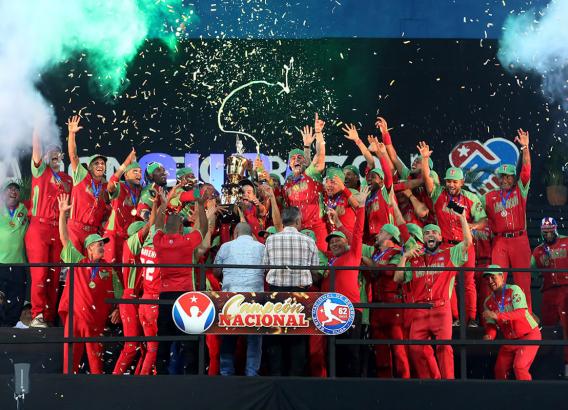Recalling Mexico's 'Night of Horror,' Two Years Later

When the gunfire had stopped, when there were no more screams, when the dust had begun to settle and the Mexican night was still like death, only then did Angel Neri de la Cruz surface from his hiding place to do a quick head count of his boarding school classmates at Ayotzinapa Rural Teachers' College.
When he was done, the toll of this "night of horror" became immediately, and breathtakingly, clear. He shouted: “We Are Missing 43!”
OPINION: 'It Was the State': Unmasking the Official Ayotzinapa Narrative
What remains unanswered, after 43 students – mostly Indigenous – vanished on a highway outside the town of Iguala two years ago Monday is who, really, is responsible? But no one disputes that something unspeakable happened on Sept. 26, 2014, on a highway outside of the town of Iguala in southwest Mexico.
According to de la Cruz, it was twilight when a group of nearly 100 mostly Indigenous student activists traveling in three buses from the Ayotzinapa Normal School near Tixtla, Guerrero, stopped in the town of Iguala about 90 miles away from their campus. The plan was to "borrow" more buses, ironically enough, to attend the 46th anniversary of a student massacre in Mexico City.
With two more buses commandeered, the students left the bus station at about half past 9:00 p.m.
That's when the nightmare began. Before the night of horror was over, four of the five buses would be ambushed. The fifth bus was detained by police, but no shots were fired.
Mexico: Ayotzinapa Families Disappointed with Pope Francis
“We got the buses and we were very close to the main square of Iguala," de la Cruz told teleSur, and "then our comrades who were there in another bus called us to say that police began shooting at them, just in front of the cathedral. We decided to move on in a convoy of three buses. A few meters away at a road junction, police with large weapons surrounded us and started shooting.”
OPINION: Criminalizing the Victims: The Latest Anti-Ayotzinapa Strategy
The students – some as young as 15 – panicked. Dozens, including de la Cruz, scrambled for cover, cowering between two buses to protect themselves from bullets. It was at that point he remembered thinking, amid the fusillade of shots, how his classmates in the first bus had been manhandled by police.
“I saw how they were arrested and put into police vehicles," he said. "They were about 25 and I knew who they were. I mean, Ayotzinapa is so small and our college is a boarding school, so, of course, I knew them all. They were just as afraid as me. I never thought: 'I will not see them again.'”
Several students took off running, into the darkness.
Aldo Gutierrez was shot in the head, and he has been comatose ever since.
Edgar Vargas was shot in the mouth but survived thanks to his comrades who carried him through the drizzling rain.
"Edgar was bleeding so much. We were so worried for him. It was very dark and it was raining so much, most of the streets were dead-ends and we were trying to take Edgar to a hospital, but we were also in a panic because we didn’t want to be shot by police,” Angel says.
Angel and the other students finally found a shelter at the clinic named “Cristina.” They spent the night there, wondering if Edgar would survive and how they could round up bail for their classmates, who they assumed had been arrested and carted off to jail.
When de la Cruz and a handful of his classmates returned to the scene, they discovered the extent of what had transpired only hours before six students dead from gunfire, including one whose horribly mutilated body was missing its eyes.
And 43 were unaccounted for.
The Attorney General, Jesus Murillo Karam, would later say that the students traveled to Iguala to boycott an event of the mayor's wife. According to this version, Mayor Jose Luis Abarca ordered local police to stop them.
Authorities said the 43 Ayotzinapa students were arrested and handed over to the local drug gang ”Guerreros Unidos,” who murdered them and burned most of the corpses at a dump site in the neighboring town of Cocula. Others were apparently dismembered, their remains were thrown into a river.
RELATED: 'Climate of Impunity' Threatens Justice for Ayotzinapa Families
The problem was that independent investigations by two groups of international experts, the Argentine Forensic Anthropology Team and the Inter-American Commission on Human Rights, or IACHR, found no evidence to support this version of events. Both groups also denounced the Mexican government's refusal to collaborate with their investigations.
But after months of work, experts did manage to identify the DNA of student Alexander Mora in the remains of a plastic bag that authorities said they found in a river. However, investigators said the remains were delivered by soldiers and that they never actually saw the plastic bag.
President Enrique Peña Nieto has seldom addressed the issue in public, and there are growing calls that he be prosecuted at the Hague once he leaves office, for human rights abuses related to the massacre and coverup.
“I have not lost my hopes," de la Cruz said. "I’m sure that they are somewhere, maybe in a military prison or in a remote place. But I want to believe that they are still alive, I want also to believe this because I know how much their parents have suffered these two years.”
A massive protest led by the Ayotzinapa college students and the parents of the missing students is scheduled for Monday afternoon in Mexico City, in which they plan to unveil an “anti-monument” – a wrought-iron impression of the number 43.
“It is insulting the way that authorities have managed the case,” says de la Cruz. “(The abductors) said they were the narcos, so then they are the narcos because those who attacked us that night were all wearing uniforms.”













Add new comment